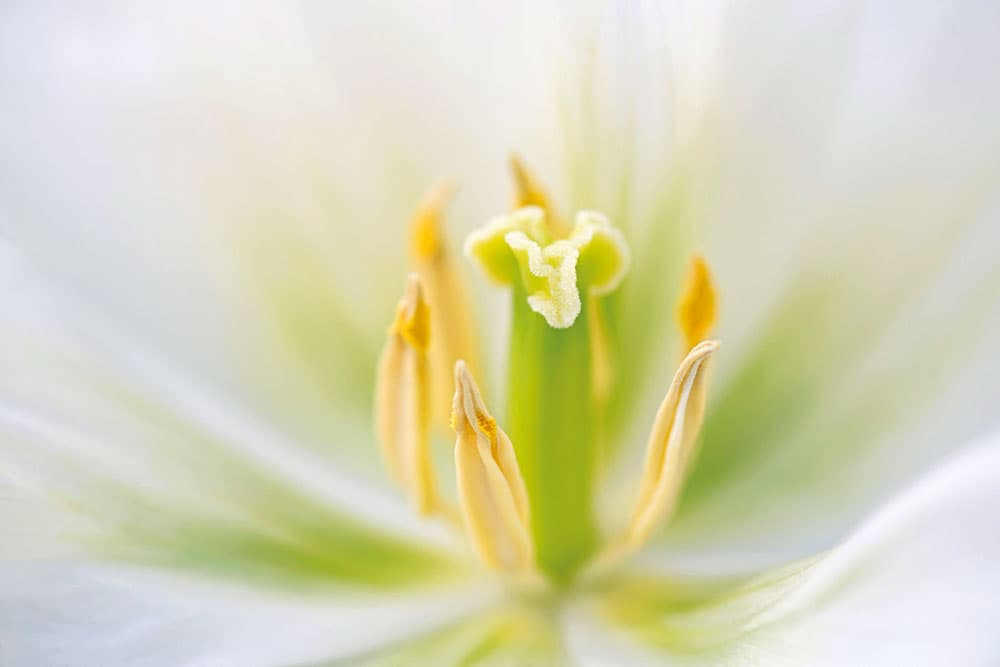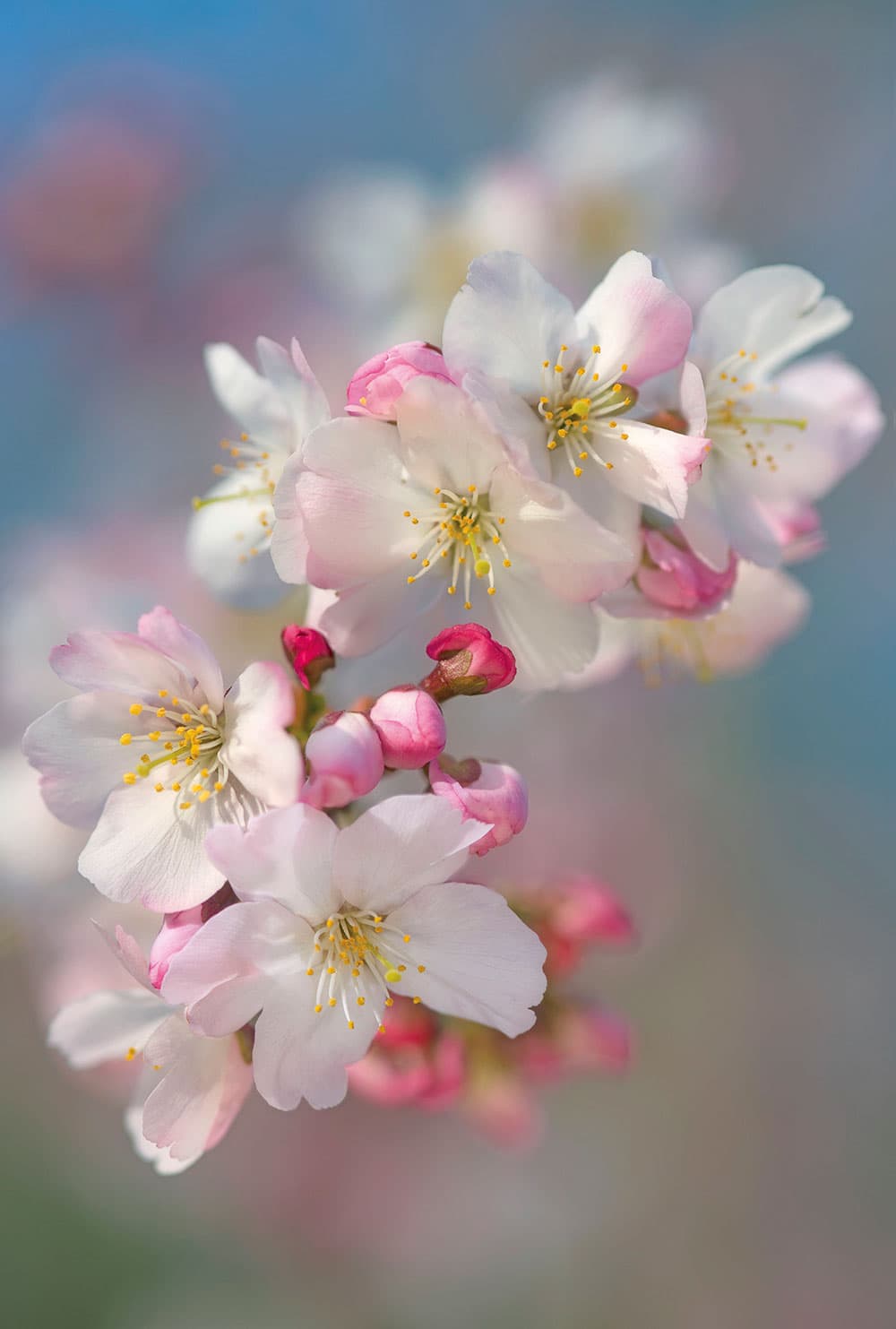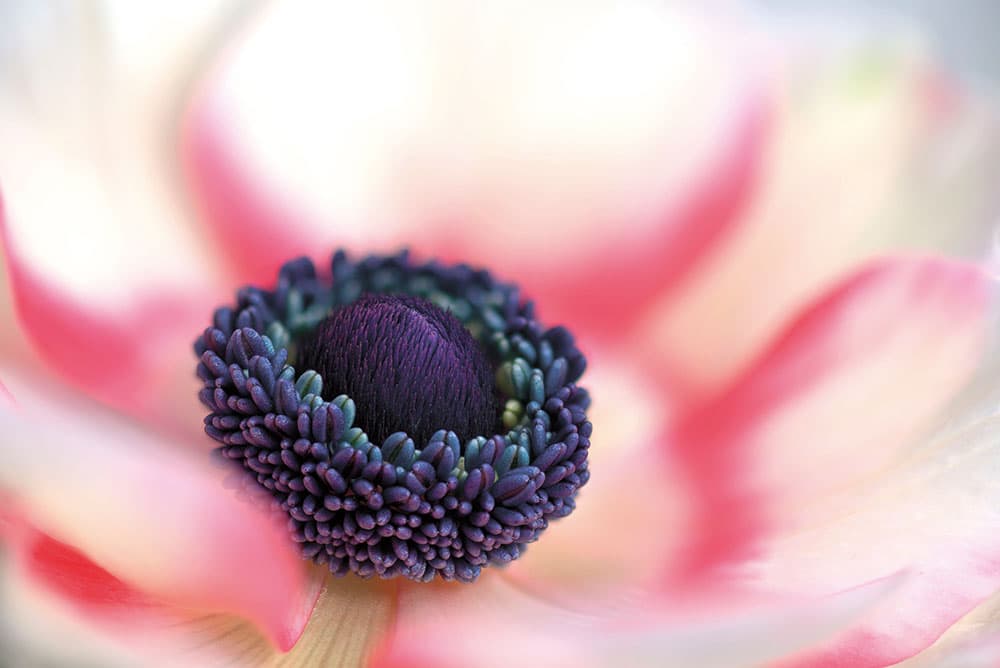Macro photography is a wonderful and fun way to reveal the beauty and finer details of nature. Sue Bishop shares her tips on how to start taking amazing macro photos of photos…
If I were allowed to keep just one of my lenses, it would have to be my macro lens. It’s a Nikon Nikkor 105mm f/2.8 Micro, and probably my oldest; so old that it has no new-fangled features like vibration reduction.
The reason I love it is that it allows me to see things in a completely different way. As an adult you probably wouldn’t choose to lie flat on frosty ground to look at a crocus. Acquire a macro lens and it’s worth it – just to see each delicate crystal of ice on the petals. It’s a whole new world of beauty!
Top 7 Macro flower photography tips
1. Use a tripod
I always use a tripod if possible, as it helps with very precise focusing. It also means that you can really fine-tune your composition. For very low-growing flowers, the use of a tripod can be awkward. So, I usually lie flat on the ground and brace myself on my elbows.
2. Group shot
It’s always lovely to photograph one flower with others of the same type in the background, using a wide aperture to throw them out of focus. The flowers in the background support the main subject with their colour and shape but are soft enough not to distract from the main flower.
3. What are the best lighting conditions for macro flower photography?
Very often the best light for photographing flowers is bright and overcast. The light is diffused by a high white cloud, so does not create any shadows. If you photograph on a sunny day, using a reflector will help to boost the light on the shadowed side of the flower.
4. Creative cropping
It’s also fun to photograph just part of a flower, cropping right into it so that the petal edges are cut off. Make sure though that your crop is definite enough to appear obviously intentional – inaccuracy, cropping off a couple of petal tips could look like a mistake.
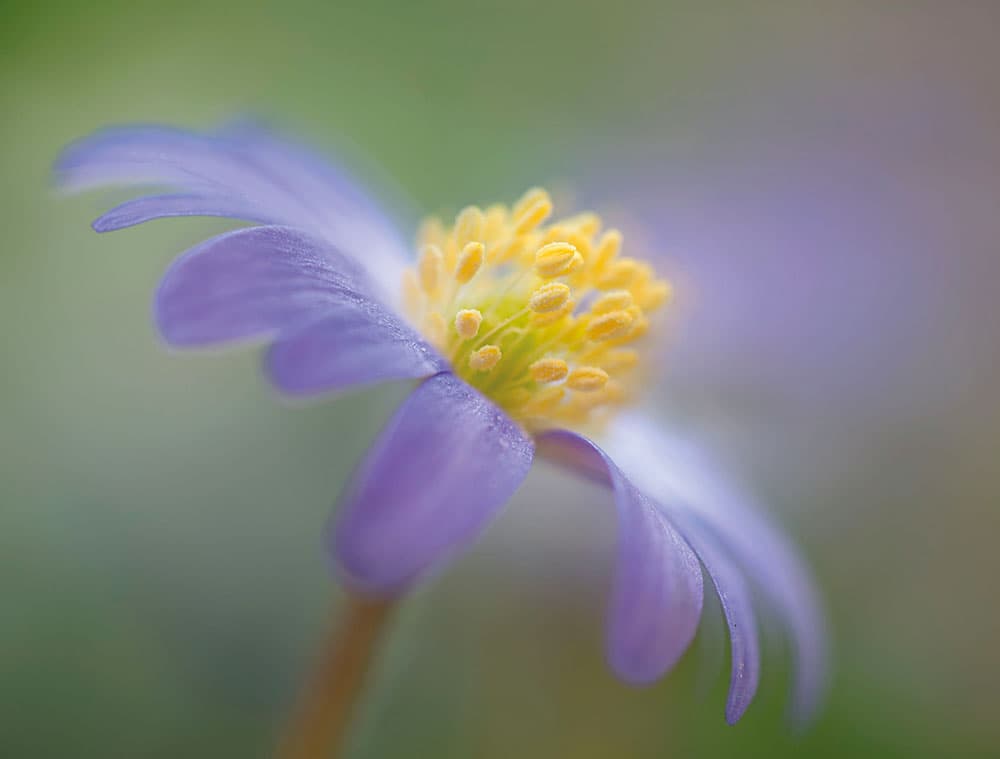
5. Focus manually
When you are working on close-ups, the depth of field will be very shallow, especially at your widest aperture. So it’s important to decide exactly which part of the flower you want to be sharp. To achieve this, manual focus is best, and live view can help you check that you’ve perfected the shot.
6. Consider your backdrop
If you fill the frame with a flower, concern for the background disappears with it. Otherwise, ensure that a background to your image isn’t distracting. Avoid bright colours, especially if the subject is a paler colour. If the background is messy, use a wide aperture to throw it out of focus.
7. Viewpoint
Think about your point of view. It’s often good to get down to a flower’s level and approach it from the side, rather than looking down on it from above. Look through the viewfinder as you move around – every tiny change in your angle to the flower will affect the image radically, so it pays to be observant as you do so.
Kit list for macro flower photography
Close-up lens

Do you need a macro lens for flower photography? Not necessarily. Without a macro, a close-up lens is an alternative. This is a secondary lens to screw onto the front of another like a filter, and reduces the minimum focusing distance. With a close-up lens, you can move the camera lens closer to the subject and gain a macro lens magnification effect. It is also inexpensive and a great way to get started with macro photography without breaking the bank.
To invest in a macro lens, we’ve shared the best value macro lenses, plus the best macro lenses for Mirrorless and DSLR, and the best second-hand macro lenses.
Reflector
The smallest Manfrotto reflector (previously known as Lastolite) is big enough for flower photography, or I even use just a piece of white card. A diffuser can be useful if the light is really harsh.
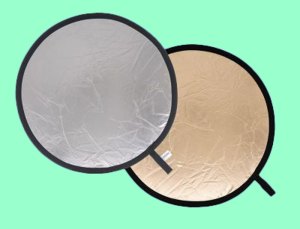
Tripod
A tripod helps me to take time for my composition as well as focus precisely. I also use a cable release to avoid moving the camera when I press the shutter button.
See more accessories for close-up photography here.
Sue Bishop specialises in flower and landscape photography and is the author of three books. She has exhibited her work many times and sold her images worldwide. In 1994 she and Charlie Waite founded Light & Land. Visit www.suebishop.co.uk.
More reading:
- Beginners guide to macro photography
- How to photograph wildflowers
- 30 ways to photograph a bouquet of flowers
- Top 20 best close-up and macro photographs
- How to take great macro photos on a smartphone
- Top tips for insect photography
- How to get great autumn macro shots



